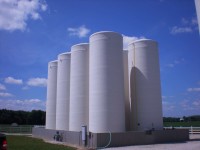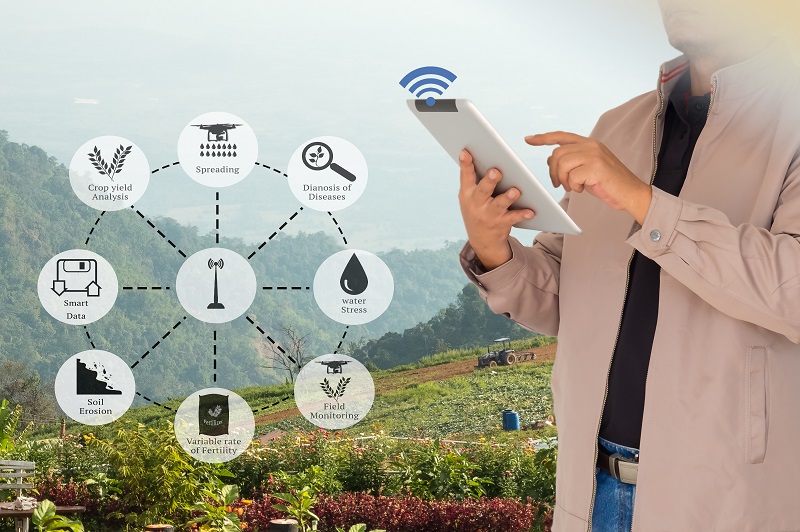Tanks Support Acreage Expansion

The season started out strong, with high crop prices spurring a host of economic activity that traveled down the ag business chain — down, in fact, to the very containment structures below briskly selling fertilizer tanks.
“The high price of commodities and the uncertainty of nitrogen prices have encouraged a strong growth in the demand for storage tanks,” says Dennis Neal, president of Enviropac Inc. “Fertilizer dealers continue to grow and update their systems, and farmers continue to add storage and containment systems to get better control of their fertilizer input costs.”
Everett “Butch” Kirk, III, president of International Tank Service Inc. (ITS), says that with crop prices so high, “Everyone was trying to maximize their acreage.” In fact, in his travels, he’s found the price of Midwest farmland “skyrocket” in some areas. For ITS, all sizes of tanks moved well this season, and the company offers tanks from 50,000 gallons all the way up to 6 million gallons.
Ron Lager, sales manager with Precision Tank & Equipment (PT&E), also sees customers clearly shifting from mild steel storage tanks to fiberglass “due to less corrosion and lower maintenance.”
Indeed, PT&E just completed its first year in its new fiberglass facility in Ligonier, IN. The location is operating at full capacity and business has been “very good,” Lager reports.
Neal would add that the change in the products being stored has caused this fiberglass demand to accelerate.
Increased sales can have drawbacks, though. Reflecting on supplies and prices of raw materials for Enviropac’s tanks, Neal admits that being able to supply this demand in a timely manner continues to be one of the company’s biggest challenges.
Petroleum costs are playing a role in both tank and containment markets. “Fiberglass pricing has been creeping up due to an increase in petroleum costs,” says Lager. In addition, Ken Hunter, owner of Hunter Agri-Sales, says his company is constantly seeing price increases because the vinyl used in its products is processed from petroleum.
Kirk is pleased that steel prices have leveled out, but found business impacted by upticks in the cost of welding gasses and weld rod. In addition diesel prices are taking a toll on the company, as its construction equipment is powered by the fuel. “Jobs we bid out a year ago need to be readjusted,” he says.
Containment News
ITS offers what Kirk would call the “Cadillac” of tanks — units that promise the ultimate in containment because they’re double-walled, basically a tank within a tank. ITS just completed its first 6 million-gallon double-wall and bottom fertilizer tank this summer along the Gulf Coast. But the company also constructs conventional single-wall steel tanks that can be secured with dike walls with concrete and membrane liners. Retailers just need to look for what is the most cost effective when drawing up their business plans, says Kirk.
ITS installs containment systems, and Kirk is seeing more and more secondary systems under and around fertilizer tanks. The installations are in answer to the growing number of federal, state and county regulations that govern dealer sites. Kirk and his team consult volumes of regulations that must be updated regularly, but find there are gray areas in the requirements that can be a challenge to interpret. “We’re not environmental consultants,” he notes.
With the continuing move to apply fungicides on corn, Hunter saw even more demand for his aerial Plia-Pad. “Regulators and airports are asking that air ag sprayers have operational areas to load their chemicals at airports,” he explains. “Our Plia-Pad is ideal for this and can be readily moved to different airports.”
ITS also offers undertank leak detection systems for both new and existing construction, combining a liner and serrated plastic pipes that run through sand. This approach has been used in the oil industry for years, Kirk explains, and ITS designs products that meet both EPA and customer requirements.
Season’s Close Uncertain
At presstime, the season’s early good vibes had faded somewhat, reports Hunter. “The dry weather conditions and lack of good crops have slowed interest of late.” He is encouraged about the new products Hunter Ag is set to launch next season, but is “somewhat” concerned with the possibility of low crop yield affecting business.
Enviropac’s Neal sees other factors impacting the market. “Uncertainty in an election year can always have an effect. Our customers need to feel comfortable in their decisions and this is not the case when taxes, programs and regulations are being tossed around by current and prospective politicians,” he believes. More specific are his concerns about air emission standards, run-off issues and overall governmental policies that make manufacturing and the market — for both fertilizer dealers and growers — uncertain. These factors make owners uncomfortable about the direction they need to go, about where they need to focus their time and resources, says Neal.





